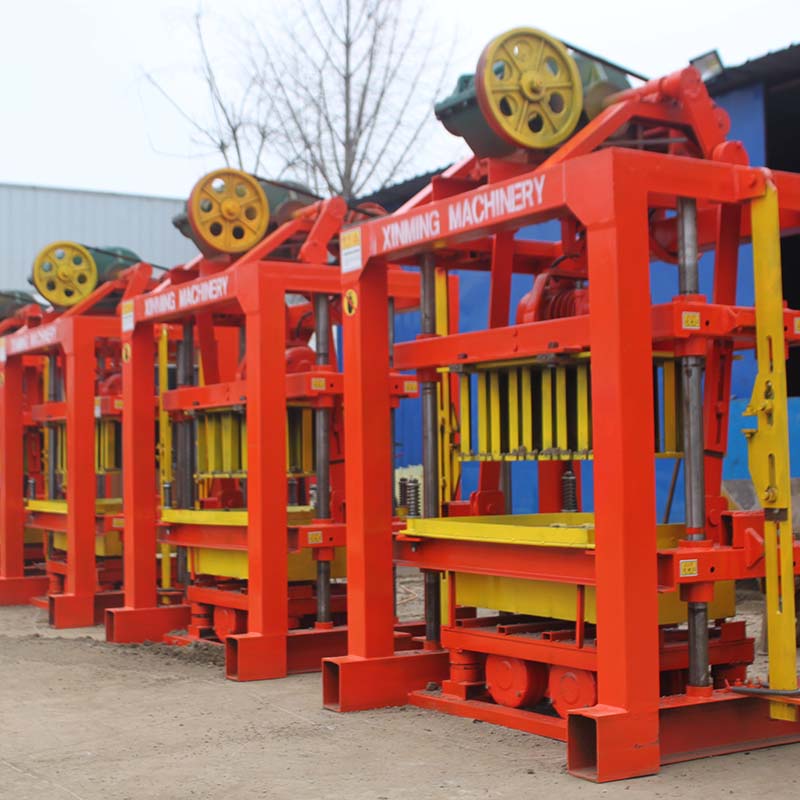
Image source:Aiweiblockmachine
Introduction
In the heart of East Africa, Kenya is a country characterized by its vibrant culture, diverse landscapes, and a rapidly growing population. With this population growth comes a need for housing and infrastructure, particularly in rural and underserved areas. In Kenya, where large-scale construction projects can be challenging to execute due to limited resources and remote locations, manual concrete block machines have emerged as crucial tools for small-scale construction projects. This article explores the pivotal role of manual concrete block machines in Kenya, shedding light on their significance, operational methods, economic impact, and contribution to sustainable development.
1. The Context of Small-Scale Construction in Kenya
Rural communities: Kenya’s rural areas often lack access to modern construction materials and technologies.
Affordable housing: Small-scale construction projects are essential for providing affordable housing solutions to the country’s growing population.
2. The Emergence of Manual Concrete Block Machines
Local innovation: Kenyan entrepreneurs have developed manual concrete block machines tailored to local needs and resources.
Cost-effective solution: Manual block machines offer an affordable and accessible way to produce construction materials.
3. How Manual Concrete Block Machines Work
Manual operation: These machines are manually operated, eliminating the need for electricity or heavy machinery.
Mixing and molding: Users mix concrete or soil-cement manually and pour it into molds, creating blocks of various sizes and shapes.
Sun drying: The blocks are left to dry naturally in the sun, reducing energy consumption.
4. Economic Impact and Job Creation
Local employment: Manual block machine production provides job opportunities in rural areas, reducing urban migration.
Entrepreneurship: Many Kenyan entrepreneurs have established small businesses around manual block machine production, contributing to local economies.
5. Versatility and Adaptability
Customization: Manual block machines can produce a range of block sizes and shapes to meet specific construction needs.
Local materials: They can use locally sourced materials, reducing transportation costs and environmental impact.
6. Sustainability and Environmental Benefits
Reduced energy consumption: The manual production process consumes less energy compared to industrial methods.
Resource efficiency: Manual block machines promote the use of locally available resources, reducing the need for resource-intensive materials.
7. Case Studies: Real-Life Applications
Shelter for vulnerable communities: NGOs and community organizations use manual block machines to build houses for the less fortunate.
School construction: Many rural schools in Kenya have been constructed using manual block machines, providing access to education.
8. Challenges and Future Prospects
Skills development: Training programs can improve the skills of manual block machine operators.
Access to capital: Entrepreneurs may face challenges in accessing funding to expand their businesses.
9. Government Support and Policies
Affordable housing initiatives: The Kenyan government has launched initiatives to promote affordable housing, which align with the use of manual block machines.
Regulations and standards: Ensuring the quality of blocks and construction practices is essential for safe and durable structures.
Conclusion
In Kenya, where small-scale construction projects are the lifeblood of many communities, manual concrete block machines have emerged as invaluable tools. They bridge the gap between limited resources and the pressing need for housing and infrastructure. Beyond their economic benefits and job creation potential, these machines contribute to sustainable development by reducing energy consumption and promoting the use of local materials. As Kenya continues to grow and evolve, the role of manual concrete block machines in small-scale construction projects is likely to remain vital in addressing the nation’s housing and infrastructure needs.
